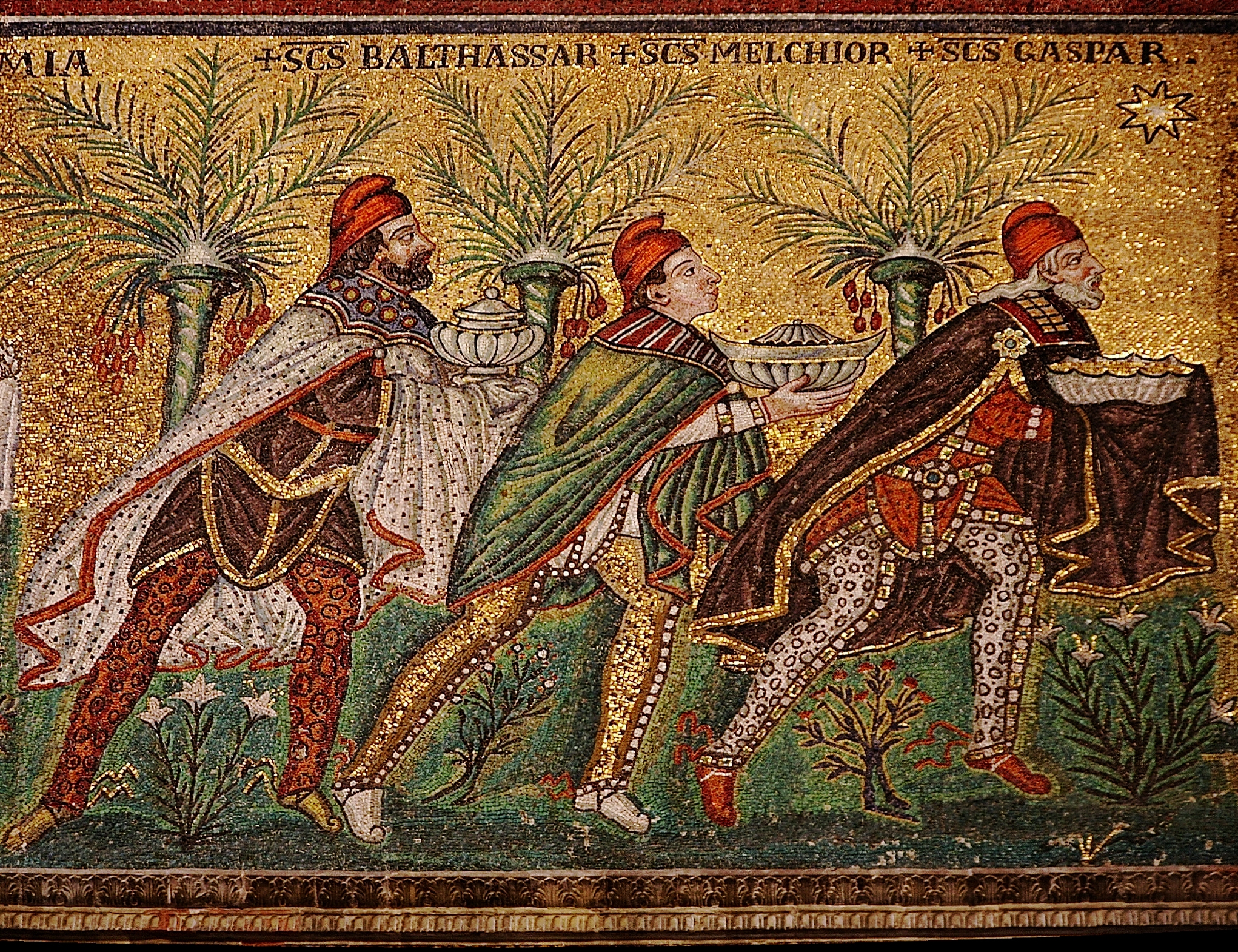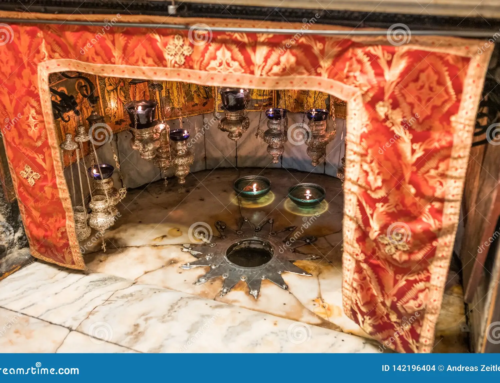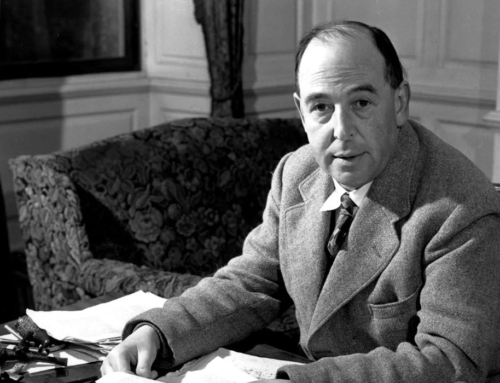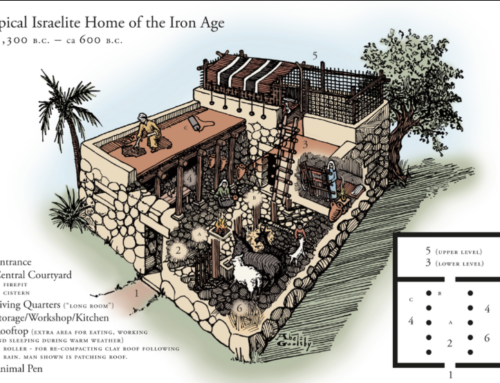in 1857 the Reverend John Henry Hopkins Jr—the rector of Christ Episcopal Church in Williamsport Pennsylvania wrote the now famous Christmas carol, We Three Kings of Orient Are. The problem is, practically everything in the Christmas carol is based on legends about the Magi and not the gospel of Matthew.
The magi did not come from a far away Eastern country like India, Persia or China. Matthew never says there were three of them and he doesn’t say they were kings. The idea that their gifts were symbols of Jesus’ status as King, God and Suffering Savior were preaching points added later. These and many other traditions like their names and their long trek following a magical star were legends that grew up around the mystical Magi story. As Galadriel in Lord of the Rings says, “History became legend and legend became myth.”
While doing the research for my book The Mystery of the Magi-The Quest to Identify the Three Wise Men I discovered why the story of the Magi, more than any other Biblical tale, was so encrusted with layers of legend and myth. Most Christians are unaware that in the early church there were many writings about the life of Christ. These apocryphal gospels and epistles were eventually weeded out as the canon of the New Testament was established.
Despite their being officially excluded from the Scriptures, they had powerful impact on the developing Christian faith. Many of the apocryphal writings dealt with the birth and boyhood of Jesus.
The earliest apocryphal version of Jesus’ birth is a document called The Gospel of James or The Protoevangelium of James. The Protoevangelium tells the story of Mary’s birth and childhood, her betrothal to Joseph and the birth of Jesus. The account of Jesus’ birth follows Matthew and Luke’s account, but there are some extra details: Mary rides a donkey to Bethlehem, there is no mention of an inn as such, and the stable where Jesus is born is in a cave.
There is a midwife named Salome present, and as Jesus is born, a wonderful, mysterious light appears. In the Protoevangelium there are no shepherds, but the story of the Wise Men is told— obviously quoting from Matthew. Adding to Matthew, the wise men in the Protoevangelium say the star was so bright on its appearing that all the other stars dimmed in its light.
Around the same time one of the earliest Christian writers, Ignatius of Antioch (d.108) in his epistle to the Ephesians, waxes eloquent about the star, “A star shone in the night brighter than all other stars. It’s light was indescribable, and its strangeness produced wonder. And all the rest of the stars with the sun and the moon made a choir around that star which outshone them all.” The exaggeration and glorification of the Magi story had already begun.
By the third century the idea that the magi were kings was starting to get traction. Tertullian and Origen mused on the Old Testament prophecies that kings would come to worship the Messiah bearing gold and frankincense and concluded that the magi must have been kings.
It was also in the third century that the magi story began to take the leap from legend to myth. The Legend of Aphroditianus is an apocryphal writing that originated in Syria where there was a strong Persian influence. The tale begins with the account of a miracle in the temple of a pagan goddess in Persia at the time of Christ’s birth. According to the myth, the statues in the temple dance and sing and announce that the goddess Hera has been made pregnant by Zeus.
Suddenly a star appears above the statue of the goddess Hera. A voice from heaven is heard and all the dancing statues fall on their faces. The wise men of the court take this to mean that a King is to be born in Judah. That evening the god Dionysus confirms their interpretation. Then the king sends the Magi to Judea with gifts, the star pointing them along their way. The story tells of the Magi’s journey to Bethlehem, and how they meet the Jewish leaders and finally Mary and Jesus. They return to Persia bringing a portrait of Jesus and Mary and put it in the temple where the star first appeared.
In the sixth century, a version of Jesus’ birth called the Syriac Infancy Gospel adds Zoroastrian links to the story of the wise men. In this myth the magi travel to Bethlehem in fulfillment of a prophecy by Zoroaster. Mary gives them the swaddling clothes as a blessing. The star is now a heavenly angel who directs them home.
In another third century work, the opus imperfectum, a writer named Ephraim said the magi saw a human image in the star while the eighth century Chronicle of Zuqnin says there were twelve magi, all of whom saw a different human image in the star. Clearly, the magi story had found its wings and soared to mythical heights impossible to imagine by the simple storyteller Matthew.
Another bizarre apocryphal text is The Revelation of the Magi. This story pretends to be told by the magi themselves. The wise men are residents of a mythical land called Shir in the Far East. They are the descendants of Seth, the third son of Adam and Eve, who passed on to them a prophecy from his father that one day a star of amazing brightness would appear to announce the birth of God in human form.
The story continues as every year the mystical magi of Shir ascended their Holy Mountain where the Cave of Treasures is located. This cave contains the wisdom of Seth and the treasures of Adam and it is there that the super bright star—brighter than the sun appears to them as a tiny, radiant human. The star child tells them to go on a long journey to Bethlehem. After long preparations they set off only to find that the star child accompanies them removing all obstacles and miraculously providing them with food and protection.
Apart from being historical curiosities, these gnostic texts have no value apart from being mildly entertaining. They are about as important to the search for Matthew’s wise men as Disney’s Sword in the Stone is to the search for the historical King Arthur.
By the sixth century Christians may not have believed the wildly fantastic magi stories of the Gnostics, but the idea that the Magi were wise men from Persia had taken root. So in the sixth century we find the Emperor Justinian commissioning the famous mosaic of the three magi in Ravenna. Justinian’s mosaic actually names the wise men, and it is the beginning of the sixth century that their names are first documented.
The Excerpta Latina Barbari composed in Alexandria, calls them Bithisarea, Melichior and Gathaspa or as we now know them, Balthasar, Melchior and Caspar. In contrast, Syriac Christians named the Magi, Larvandad, Gushnasaph, and Hormisdas. Ethiopian Christians called them Hor, Karsudan, and Basanater, while the Armenians said they were named, Kagpha, Badadakharida and Badadilma.
The various ethnic names of the Magi also indicates a widening out of the magi tradition from the assumption that they were Persian priests. The Syrian, Ethiopian and Armenian Christians were among the first to accept the Christian message, and their independent magi traditions attests to both their antiquity and affirms St Augustine of Hippo’s (d. 430) suggestions that the wise men represented the whole of the Gentile (non-Jewish) world.
Some two hundred years after Justinian’s famous mosaics, an eighth century Irish manuscript Collectanea et Flores offers more details about the appearance of the wise men, explaining that they represent the three ages of man (youth, middle age and old age). By this time they were no longer Persian Magi. Instead the wise men assumed three different racial characteristics showing that they represented Europe, Africa and Asia— the three regions of the known world. At the same time, the British historian, the Venerable Bede mused that the international origins of the three wise men could also signify the three sons of Noah who, as tradition had it, re-peopled the globe and were the source of the humanity’s three basic racial groups.
The legends about the magi continued to develop so that according to the 12th-century life of St Eustorgio, the bodies of the three kings were discovered in Persia in the early fourth century by St. Helena, the mother of the emperor Constantine and eventually translated to the cathedral in Cologne.
In the fourteenth century the Venetian explorer Marco Polo recorded that he had visited the village in Persia where Helena had identified the tomb, and in the same century, the Carmelite monk John of Hildesheim wrote Historia trium regum, (History of the Three Kings). John of Hindlesheim recounts how the star was first sighted in the forty second year of the emperor Augustus from the summit of Mount Vaus in the East by a group of pagan astrologers who were aware of the Old Testament prophecy of Balaam.
Hindlesheim says the star was as bright as the sun, and that the three kings from their own lands set out to follow the star they had seen. Melchior travelled from Nubia and Arabia. Balthasar from Godolia and Saba and Caspar from Tharsis and Egrisoulle. Each with a magnificent retinue, they followed the star for thirteen days and arrived at the same time in Jerusalem where they were amazed to discover that they could understand one another’s languages. After their audience with King Herod, and instructed by his scribes, they continued their journey to Bethlehem, again guided by the magical star.
In Mystery of the Magi-The Quest to Identify the Three Wise Men I peeled back the layers of legend and myth to study the simple account in Matthew’s gospel. I delved into the politics, economics, religion and culture of the time to piece together a plausible historical account.
So who were they really? It is probable that the Magi were sages from the court of the Nabatean king Aretas IV. Coming from the neighboring kingdom just to the East of Herod the Great’s Judea, they were on a diplomatic mission to pay homage to the rumored newborn King of the Jews—who they assumed was a grandson or great grandson of Herod. Bringing diplomatic gifts representative of their kingdom, they found their way to Bethlehem and paid their homage to the Christ child.
The Mystery of the Magi makes a perfect Christmas gift for that person on your list who is dubious about the claims of Christianity. The book is not preachy or “inspiring” it is simply a historical investigation of the magi story from Maththew’s gospel. Go here to purchase.







Leave A Comment
You must be logged in to post a comment.